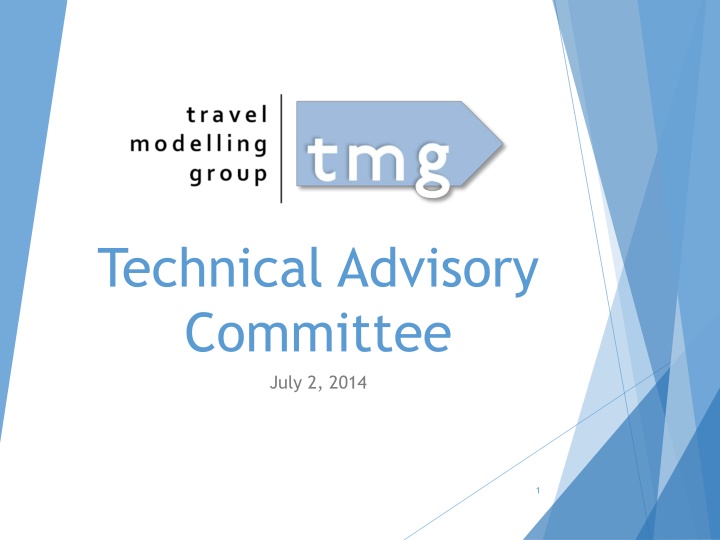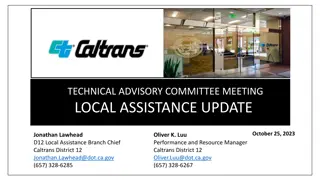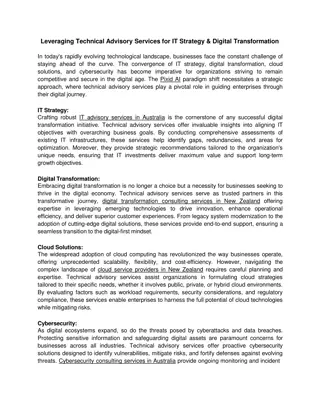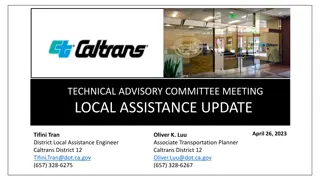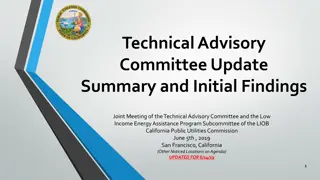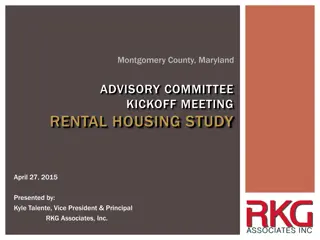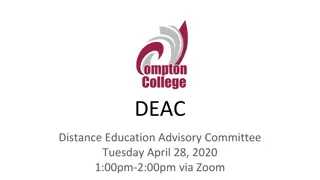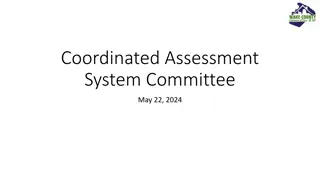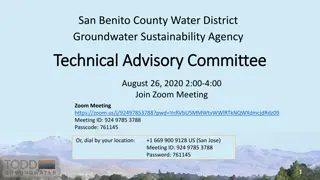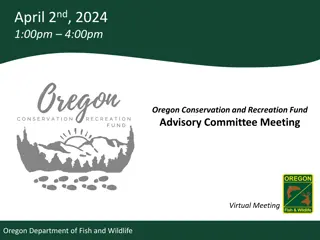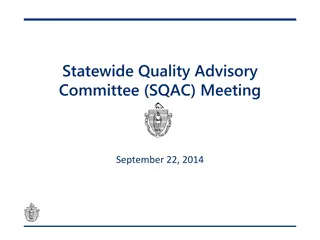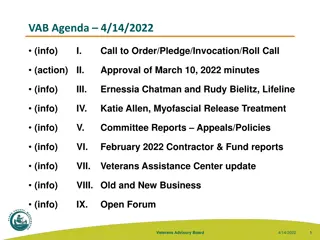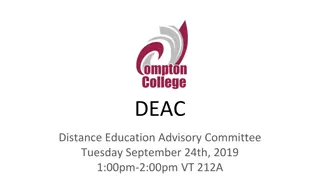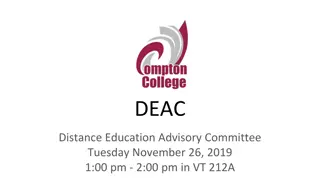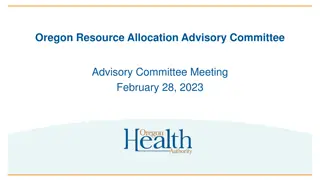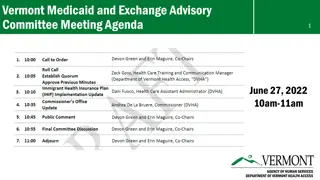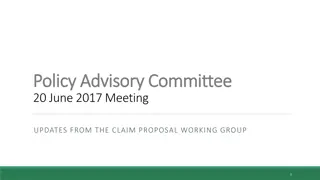Technical Advisory Committee Meeting Agenda
The Technical Advisory Committee meeting on July 2, 2014, discussed various topics including a preliminary demo of GTAModel V4.0, component overview, file system structure, model system, transit assignment calibration, and fare specification for FBTA. The meeting covered components like synthetic population, place of residence, work, and school, activity generation, mode choice, and station access. It also highlighted the process of generating synthetic population based on TTS household records and updating place of school and residence proportionally by zone. The meeting included discussions on occupations, car ownership, and activity generation based on TTS data. Furthermore, location choice models focusing on market, work-based, and other businesses were also explored.
Download Presentation

Please find below an Image/Link to download the presentation.
The content on the website is provided AS IS for your information and personal use only. It may not be sold, licensed, or shared on other websites without obtaining consent from the author.If you encounter any issues during the download, it is possible that the publisher has removed the file from their server.
You are allowed to download the files provided on this website for personal or commercial use, subject to the condition that they are used lawfully. All files are the property of their respective owners.
The content on the website is provided AS IS for your information and personal use only. It may not be sold, licensed, or shared on other websites without obtaining consent from the author.
E N D
Presentation Transcript
Technical Advisory Committee July 2, 2014 1
Todays Agenda 1. Preliminary Demo of GTAModel V4.0 2. GTAModel V4.0 Component Overview 3. File System Structure 4. GTAModel V4.0 Model System 5. Transit Assignment Calibration 6. Fare specification for FBTA (time permitting) 2
GTAModel V4.0 Component Outline Synthetic Population Place of Residence Place of Work Place of Residence Place of School Activity Generation Location Choice Mode Choice Station Access Choice 4
Synthetic Population Based on TTS Household records Aggregated households on to the planning district level Redistributed to each zone randomly closely matching population by zone Requires to be run with access to the TTS Database / Computer Will be replaced in the future with a superior model in the near future (V4.01) 5
Place of Residence Place of Work Four occupations Full-Time / Part-Time 3 worker categories No Car or no License License and less cars than drivers License and at least as many cars as drivers 6
Place of Residence Place of School Updates proportionally by zone the base year s linkages. School zones are assigned discreetly through a random process If no linkages existed in the base year then another zone from the planning district is used instead. To help increase the fit we assign school zones without replacement 7
Activity Generation Activity generation times / rates are generated from TTS data Activities are first broken down by frequency Then they are broken down into start times Finally for each start time it is broken down by duration 8
Location Choice Three location choice models Market Work Based Business Other The models look at the previous and next episodes and only include feasible trips into the choice set according to auto travel time 9
Mode Choice - Modes Auto Carpool (Interhousehold passenger / taxi) Passenger (Intrahousehold passenger) Drive Access Transit (DAT) Walk Access Transit (WAT) Bicycle Walk (all way) Rideshare (joint trip auto) Schoolbus 10
Mode Choice - Algorithm Generate a list of all feasible tours for each non shared mode If a tour uses a tour based mode compute the tour level utility (needed for DAT) Find the best tour using the restrictions of what vehicles they use In our case it is car / no car Assign available resources to people by tour Given the resource assignments we then try to match drivers with passengers if it provides a better household level utility Joint trips then share mode choices with other tour members 11
Station Access Choice For DAT discrete choice needs to be made to see what station will be chosen to access the transit network This station will be used for both access and egress Utilities are calculated on a tour based level A station is only chosen once the DAT mode has been selected as the wanted mode after vehicles have been assigned 12
Overview Activity Distributions BaseYearMatrix Documentation Employment HouseholdData Transit Fares ZoneData 14
Model System 15
Model System Template - Tasha Runtime 16
Main Components Household Loader Network Data Scheduler Location Choice Model Modes Auto Mode Other Modes Shared Modes Mode Choice Auto Type ( mainly used for future expansions ) Zone System 17
Expansion Components Pre Run Pre Iteration Post Scheduler Post Household Iteration Post Household Post Iteration Post Run 18
Used Expansions Pre Run Computes Auto and Transit s initial network data Post Iteration Computes next iteration s Auto and Transit network data Post Household Builds then stores the demand matrices for Auto and Transit 19
Resources Used for storing important pieces of data that are used between multiple modules The EMME Modeller Controller Jobs by occupation and employment status Allow for dynamic loading 20
Traffic Assignment Overview and Parameters Standard Traffic Assignment Use link-based generalized cost for tolls Light and Regular Fare Zones for the 407ETR Includes transit background traffic Peak Hour Factor (AM/PM) Representative Hour Factor (Midday, Evening) Toll Percption 22
TTS Data Extraction For each time period, extracted the matrix conditional on the following: Trips started within the time period Primary mode was D, M, T, or was a drive-access-transit trip For drive-access-transit trips, only trips to valid network stations were included No trips were extracted for overnight (assumed freeflow traffic conditions) 23
Cordon Count Data Used 2011 Cordon Count data Toronto, Durham, York, Peel, and Halton data were included For AM/PM periods, determined the peak hour of traffic volume Compared count post data against the traffic volume for the peak hour 24
AM Peak Hour Factor AM Residuals 0.405 0.418 0.430 0.443 0.455 0.468 0.480 100.00 80.00 60.00 40.00 20.00 - (20.00) (40.00) (60.00) (80.00) Average Error Use a PHF = 0.437 25
PM Peak Hour PM Residuals 0.275 0.300 0.325 0.350 0.375 0.400 0.425 0.450 200.00 150.00 100.00 50.00 - (50.00) (100.00) (150.00) (200.00) (250.00) (300.00) Average Error Use a PHF = 0.385 26
Midday/Evening Representative Hour The highest demand within the midday and evening period comes at the shoulders of the AM and PM periods, respectively Therefore no need to represent the peak of demand, just divide by the number of hours in the time period Midday Assignment Period = 0.1667 Evening Assignment Period = 0.2 27
Toll Perception MSE of 407 Traffic Counts, AM Peak 3,500,000 3,000,000 2,500,000 2,000,000 1,500,000 1,000,000 500,000 - 20 25 30 35 40 45 50 55 60 65 Time Value of Money ($/hr) All 407 Stations Eastbound Mainline Westbound Mainline Gates Only (Peel) 28
Screenline Results [Refer to handout] 29
Model Overview Congested Transit Assignment (captras.mac port) Includes ALL transit modes in one assignment GO Rail, GO Bus, and Subway lines all use segment speeds All others use line speeds Assumed no service in the Overnight time period Walk-on-links permitted Logit model on outgoing centroid connectors (Emme 4+ only) Headways based on average arrival interval in the time period Speeds based on scheduled time and route length 31
Transit Assignment Parameters Congestion Perception Fare Perception Wait time Perception Walk Perceptions Toronto Access Toronto Walk-on-network Non-Toronto Egress Non-Toronto Walk-on-network IVTT Perception = 1.0 32
Transit Assignment Parameters (cont d) Subway Boarding Penalties TTC Bus Brampton YRT Durham VIVA GO Bus GO Train Halton Hamilton Mississauga Streetcar (Regular, XROW) 33
Transit Assignment Parameters (cont d) Boading Penalty Perception (not estimated) GO Train Headway fraction Consistently estimated to be 0.2 (compared to 0.5 for the rest of the network) Walking speed Assignment Period The only parameter which is different for each time period 34
TTS Data Extraction - Demand Extracting transit demand matrices Assigned to the 4 time periods based on trip start time 5 classes of trip: Walk-acces-egress transit (WAE) Station-access, walk-egress GO (SAG) Station-access, walk-egress Subway (SAS) Walk-access, station-egress GO (SEG) Walk-access, station-egress Subway (SES) Exluded trips which used a transit route not in the network 35
TTS Data Extraction - Demand For SAS/SES: First/last route respectively must be TTC Subway station of access/egress must have a TTC parking lot For SAG/SEG, the first/last route respectively must be GO 36
TTS Data Extraction Calibration Data For each time period, for each trip class (WAE, SAG, SAS, SEG, SES): Boardings for each transit route Matrix of transfers, including initial boardings and final alightings, for the following groups of transit lines: Brampton Transit Durham Region Transit GO Bus GO Train Oakville, Burlington, Milton Transit Hamilton Street Railway MiWay TTC Bus TTC Streetcar TTC Subway York Region Transit VIVA 37
Estimation Procedure Extract TTS demand matrices 1. Determine time period assignment period 2. For each model: 3. Determine parameters 1. Code tool 2. Estimate parmeter values using XTMF 3. Calibrate parameter values by hand 4. Repeat 3 until satisfied with model results 4. 38
Transit Assignment Period Used to calculate transit line capacity Represents the number of hours for which the demand matrix is applied Inverse of the Peak Hour Factor (which gets applied to the demand matrix for Auto Assignment) A different value is required for each time period 39
AM Assignment Period Start 6:00 6:15 6:30 6:45 7:00 End 6:59 7:14 7:29 7:44 7:59 Trip Starts 101,045 157,558 178,371 224,476 239,287 Peak Hour Factor Assignment Period 7:15 7:30 7:45 8:00 8:14 8:29 8:44 8:59 Total 273,443 268,165 242,053 218,245 558,578 0.49 2.04 40
PM Assignment Period Start 15:00 15:15 15:30 15:45 16:00 16:15 16:30 16:45 17:00 17:15 17:30 17:45 18:00 End 15:59 16:14 16:29 16:44 16:59 17:14 17:29 17:44 17:59 18:14 18:29 18:44 18:59 Trip Starts 173,731 187,511 182,630 195,199 199,193 229,627 232,947 218,193 212,767 159,503 150,470 123,037 119,225 704,915 Peak Hour Factor 0.33 Assignment Period 3.03 41
Midday, Evening Assignment Periods The highest demand within the midday and evening period comes at the shoulders of the AM and PM periods, respectively Therefore no need to represent the peak of demand, just use the # of hours in the period Midday Assignment Period = 6.0 Evening Assignment Period = 5.0 42
Model 1 Description Congested transit assignment (5 iterations) Estimated on AM dataset NOT using fare perception (i.e. not fare-based) 43
Model 1 Parameter Values Parameter Value Congestion Penalty Perception 0.41 Wait Time Perception 2.23 Toronto Walk Perception 1.2 Non-Toronto Walk Perception 1.3 Boarding Penalty Perception 0.8 GO Train Headway Fraction 0.2 Walking speed (km/hr) 5 44
Model 1 Parameter Values Parameter Value 9 2.5 15 7.5 2.75 6 3 6 6 2.25 2 5 3 Brampton Boarding Penalty Durham Boarding Penalty GO Bus Boarding Penalty GO Train Boarding Penalty Halton Boarding Penalty Hamilton Boarding Penalty MiWay Boarding Penalty Streetcar Boarding Penalty Streetcar XROW Boarding Penalty Subway Boarding Penalty TTC Bus Boarding Penalty YRT Boarding Penalty VIVA Boarding Penalty 45
Model 1 Results: AM Boardings Group TTS Model Error % Error Brampton Durham 21,096 10,055 17,925 9,172 - 3,170 - 883 -15% -9% GO Bus GO Train Halton 10,330 98,304 6,796 16,269 101,130 6,105 5,939 2,826 57% 3% -10% - 691 Hamilton 22,952 19,168 - 3,784 -16% Mississauga 36,760 41,457 4,697 13% Streetcar Subway TTC Bus VIVA 56,887 361,520 318,859 6,986 52,549 356,509 315,096 7,916 - 4,337 - 5,011 - 3,763 -8% -1% -1% 13% 930 YRT AM TOTAL 16,119 966,664 13,628 956,925 - 2,491 - 9,739 -15% -1% 46
Model 1 Results: AM Transfers [Please refer to handouts] 47
Model 1 Results: PM Boardings Group TTS Model Error % Error Brampton 27,428 23,603 - 3,824 -14% Durham 10,522 11,043 520 5% GO Bus GO Train Halton 14,048 98,622 8,882 18,360 113,421 8,003 4,313 14,799 - 879 31% 15% -10% Hamilton 30,131 25,375 - 4,756 -16% Mississauga 51,447 58,566 7,119 14% Streetcar Subway TTC Bus 77,676 470,499 415,776 63,440 439,530 397,171 - 14,236 - 30,969 - 18,605 -18% -7% -4% VIVA 9,934 12,715 2,782 28% YRT PM TOTAL 20,190 17,046 - 3,143 - 46,880 -16% -4% 1,235,154 1,188,274 48
Model 1 Results: PM Transfers [Please refer to handouts] 49
Model 2 Description Congested transit assignment Using Fare Perception Still work-in-progress for GTAModel 4.1 Could include transit speed updating 50
